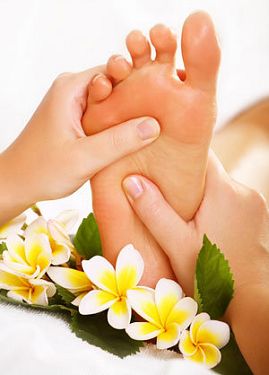Reflexology, Maternity Reflexology and Spinal Reflexology
What is Reflexology?
Reflexology is a non-intrusive complementary health therapy, based on the theory that different points (reflex areas) on the feet/lower leg and hands correspond with different areas of the body. The reflex areas form a map of the body with the right foot corresponding to the right side of the body and the left foot corresponding to the left side. Reflexologists believe that massaging these areas allows the symptoms and their causes to be treated.
Reflexology does not claim to be a ‘cure-all’ but is known to help relaxation and improve the mood of the client. It helps to relieve tension, aids sleep and improves a sense of well-being.
Reflexologists work holistically with their clients and aim to work alongside mainstream healthcare to promote better health for their clients.
I’m also a member of the Association of Reflexologists, who provide support and training to make sure we give the best possible service to our clients.
Preparing for a reflexology session
At your first appointment, you will be required to complete a consultation form and we’ll have a chat about any current health conditions. Please also bring along details of any existing medication.
Pregnancy Reflexology
Reflexology can be a wonderful support to those trying to conceive and throughout pregnancy. It aims to balance emotional, hormonal and physical changes in your body in order to restore homeostasis and therefore put you in the best possible condition to conceive and maintain a healthy pregnancy.
Before pregnancy
As Reflexology aims to restore homeostasis it could be the ideal therapy to encourage regulation of ovulation and hormone balance during the pre-conception period. Reflexology may help men and women with fertility issues and can also be used before, during and after Assisted Reproductive Technology (ART), which can be a very stressful time physically and emotionally. Reflexology is excellent for alleviating stress as it is very calming and relaxing. This is important if you are trying to increase your fertility and become pregnant. Other dietary and lifestyle factors will also be considered. Regular Reflexology treatments coupled with lifestyle changes by both partners may be really effective at helping couples conceive. It is usually advised to have 2 treatments a month pre-ovulation and after the menstruation period. No Reflexology will be offered in between in case conception has occurred.
Maternity Reflexology
Reflexology can be a great support to women in the second and third trimesters of pregnancy whilst their body is going through so many changes. It can help with constipation, backache and heartburn during pregnancy. Maternity Reflexology can help the body to prepare for labour and may assist in bringing on labour at full-term if Mum and baby are ready. Research has shown that some women who have had regular Reflexology sessions during pregnancy have had shorter labours with less need for medical intervention. The aim of Maternity Reflexology is to enhance wellbeing during pregnancy through relaxation and by maintaining the homeostatic balance.
Treatments are offered after 14 weeks. The 1st trimester is a fragile period of changes and it would not be wise to disrupt this process.
Post-natal Reflexology
Reflexology can be used for post-natal aches and pains, post-natal depression and emotional recovery. It may also promote lactation and increase energy levels and vitality.
Spinal Reflexology
Spinal Reflexology is a powerful form of Reflexology based on stimulating the spinal reflexes on the feet. Individual vertebrae are stimulated with the aim of identifying nerve roots that are out of balance.
The spinal cord is a cable that descends from the brain to the lumbrosacral area of the spine. Through 31 pairs of spinal nerves, the spinal cord is connected to the rest of the body through the nervous system and relays information to and from the brain. Nerve roots exit the vertebrae to reach specific organs and muscles. If, for some reason, the nerve roots are compressed this can interfere with neural pathways and cause organs not to function properly. The aim of Spinal Reflexology is to identify organs which are not functioning correctly.
Spinal Reflexology can help in a number of ways:
- Promote healing by working on the spinal nerve roots and helping to open up neural pathways
- Increases blood flow to reduce swelling and chronic inflammation. On the most basic level, Reflexology increases the circulation
- Help with natural pain relief with regular treatments
- Access spinal nerve roots to directly treat the cause of the problem or referred pain
Spinal Reflexology can be a standalone treatment or can be incorporated in to a standard Reflexology where the whole body is treated but certain areas are targeted using Spinal Reflexology. I am also happy to combine Reflexology with massage.
